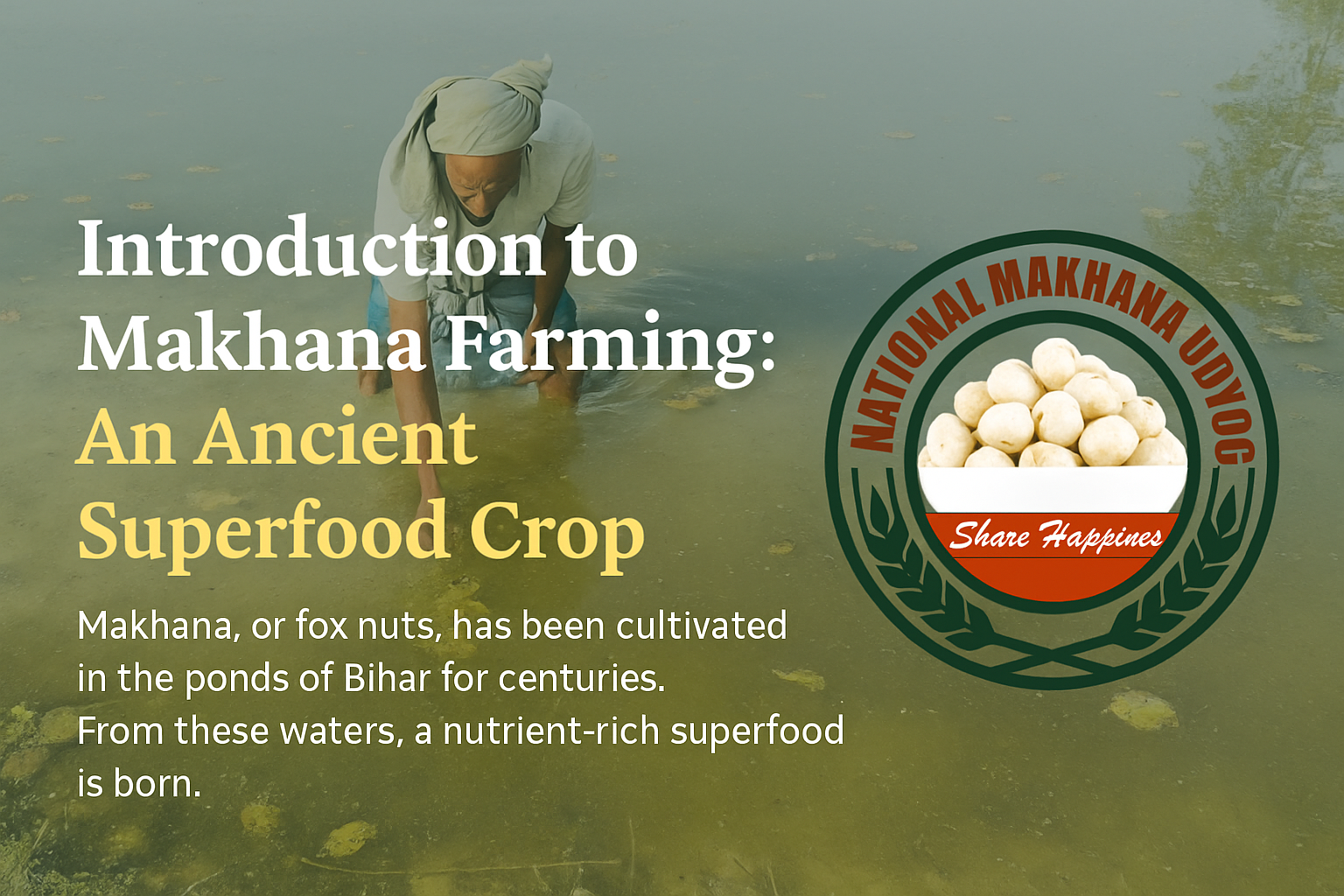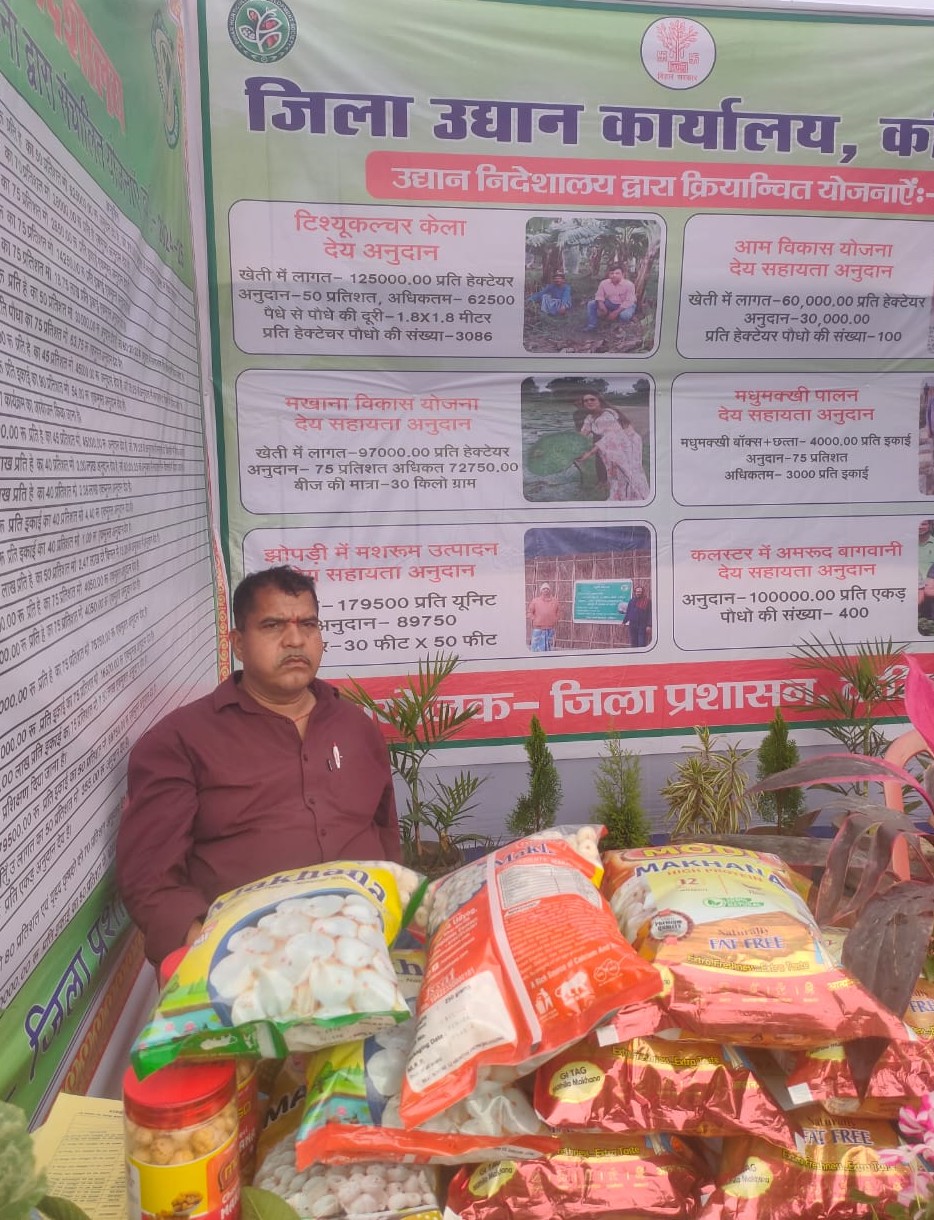Introduction to Makhana Farming: An Ancient Superfood Crop

National Makhana
27-Apr-2025

Makhana, also known as Foxnut or Gorgon Nut, is one of India’s oldest and most culturally significant aquatic crops. Traditionally cultivated in the eastern regions of India — especially Katihar, Bihar, which is the world’s largest Makhana-producing district — Makhana has now evolved from a local delicacy to a global superfood.
At National Makhana Udyog, we are proud to carry forward this legacy of traditional farming, blending age-old techniques with modern quality standards to meet the rising demand in domestic and international markets.
???? What is Makhana?
Makhana is the seed of the Euryale ferox plant, an aquatic crop grown primarily in stagnant water bodies like ponds and lowland fields filled with shallow water. The plant produces beautiful lotus-like flowers, and its seeds — when harvested, popped, and roasted — become the crunchy, nutritious snack we call Phool Makhana.
Rich in protein, fiber, antioxidants, and essential minerals, Makhana is gluten-free and low in calories, making it an ideal food for health-conscious consumers.
???? Why Is Makhana Called a Superfood?
Makhana has gained global recognition as a superfood because of its unique health benefits:
Low in fat and high in protein
Excellent for digestion and weight loss
Helps regulate blood sugar and pressure
Anti-aging and heart-healthy properties
Safe for diabetics, gluten-sensitive individuals, and fasting diets
This makes Makhana an ideal food in both daily diets and functional food products.
???? Makhana Farming in Bihar: A Cultural Heritage
The state of Bihar, and particularly the Katihar district, has been the heartland of Makhana farming for centuries. Over 80% of India’s Makhana production comes from this region. The farming practice is passed down from generation to generation, with farmers mastering the art of growing Makhana in shallow ponds and seasonal wetlands.
????️ Makhana Farming Process – From Pond to Plate
Pond/Field Preparation (Nov–Jan):
The pond is cleaned, dried, and re-watered to prepare the soil bed.
Transplanting Sprouted Plants (Jan–Mar):
Instead of seeds, small sprouted plants (with 1–2 leaves) are transplanted at 2-feet intervals in shallow water.
Flowering & Fruiting (Apr–Jun):
The plant grows floating leaves and begins to flower, followed by fruit (seed) development under the water surface.
Harvesting (Jul–Oct):
Seeds are manually collected from ponds and taken for drying, popping, and grading.
Processing & Packaging:
Seeds are roasted and popped into the crunchy, white Phool Makhana, ready for sale in raw or flavored forms.
???? The Role of National Makhana Udyog
As a trusted name in the industry, National Makhana Udyog is a leading Makhana Manufacturer, Phool Makhana Exporter, Roasted Makhana Manufacturer, and Foxnut Supplier based in Katihar, Bihar. We are committed to sustainable sourcing, scientific grading, and hygienic processing to deliver the finest Makhana to the world.
Whether it’s raw Phool Makhana, roasted snacks, or white-label exports — we ensure premium quality at every step.
???? From Tradition to Global Trend
Today, Makhana is being exported to markets in the USA, UK, Europe, Gulf, and Southeast Asia. Its rising popularity is creating opportunities for farmers, entrepreneurs, and health brands worldwide.
And at the heart of this journey lies the hard work of the farmers of Katihar, and the commitment of companies like National Makhana Udyog who are transforming a rural legacy into a global brand.
???? Get in Touch
Interested in sourcing or exporting Makhana?
???? National Makhana Udyog – Katihar, Bihar
???? Website: www.nationalmakhana.com
???? Email: nationalmakhana@gmail.com
Latest Blog


